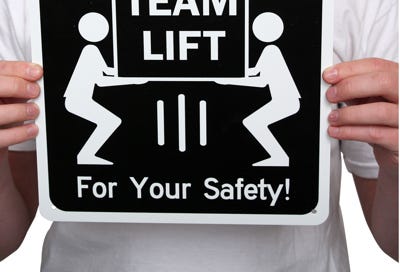Rethinking Process Documentation: Less is More
Dear Knowledge Management Enthusiasts,
This week, we're diving into a topic often overlooked in our field: the art of creating effective process documentation. As knowledge workers, we're frequently tasked with documenting processes, but are we doing it in the most effective way?
Key Takeaways:
Not all processes need comprehensive manuals: Sometimes, the most effective documentation is concise and readily available at the point of need.
Location matters: The best place for instructions might be where the task is performed - think of airline safety cards or recipe instructions.
Match documentation to the task and user: Complex, high-risk processes may require detailed docs, but everyday tasks often benefit from simplicity and accessibility.
Focus on clarity, not complexity: The goal is to help people do their jobs effectively, not to create lengthy documentation.
Consider alternatives: Could a checklist, improved UX, or process elimination be more effective than traditional documentation?
Food for Thought:
Safety signs are often good examples of process docs. They are:
Concise
Visually clear
Located exactly where it's needed
Addressing a specific, immediate need
How can we apply these principles to our knowledge management practices?
And Of Course, the Power of Video Instructions
Video has emerged as a powerful tool for process documentation. Here's why you should consider incorporating video instructions into your knowledge management strategy:
Visual learning: Many people are visual learners. Video allows them to see the process in action, making it easier to understand and remember.
Demonstration of complex tasks: Some processes are difficult to describe in text but can be easily demonstrated visually.
Engagement: Videos can be more engaging than text, potentially increasing the likelihood that employees will actually use the documentation.
Accessibility: With smartphones, tablets, and computers everywhere, video instructions are easily accessible when needed.
Consistency: Videos ensure that every viewer receives the same information, reducing the risk of misinterpretation.
Time-saving: In many cases, watching a short video can be quicker than reading a lengthy document.
Action Item:
This week, review a process document you've created or used regularly. Ask yourself:
Is this information available when and where it's needed?
Could it be simplified without losing essential information?
Is there a more effective way to present this information?
Remember, our goal as knowledge workers isn't to create great documentation - it's to help people do their jobs effectively. Sometimes that means writing less, not more.
Bye for now,
Your Secret Knowledge Worker Team



